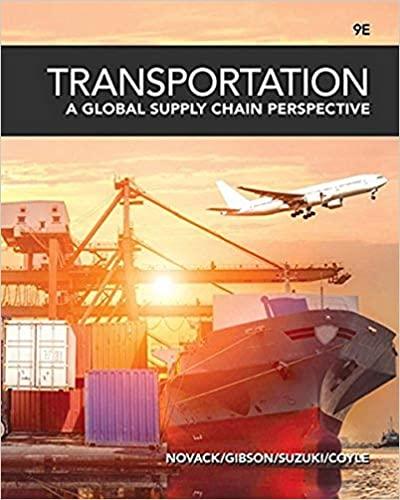Question
Speedy Delivery Service, Inc. needed to hire a new driver for in-city deliveries. It advertised the position, reviewed resumes, and interviewed several applicants, including Annie
Speedy Delivery Service, Inc. needed to hire a new driver for in-city deliveries. It advertised the position, reviewed resumes, and interviewed several applicants, including Annie Garmin. A trained truck driver, Annie had 10 years of experience driving the types of trucks that Speedy used. A life-long resident of the city, Annie was also very familiar with the city and Speedy believed that she would be able to complete the required daily deliveries in a reasonable amount of time. After conducting a thorough background check on Annie that revealed no concerns about her driving record or fitness as a delivery driver, Speedy hired Annie Garmin as the new driver.
In her new position, Annie was required to work five days a week from 7 a.m. until 4 p.m., with an hour allowed for lunch. When she arrived at the Speedy distribution center each morning before 7, she would be assigned a truck that was already loaded and given a route to follow to make her deliveries for that day. Speedy paid all of its drivers (including Annie) a weekly salary and provided certain benefits, including two weeks’ vacation and 10 days of sick leave every year.
Then the pandemic hit, more people turned to online shopping, significantly increasing Speedy's business. Unable to hire enough new drivers, Speedy began adding more deliveries to the drivers' daily schedules. Annie, like many other drivers, began having trouble finishing all her deliveries by 4 p.m. When she questioned her supervisor about the additional deliveries, she was told that if she were unable to make all her required deliveries each day, the company would find someone else who could.
When she picked up her truck a few days later, it had even more items to deliver and Annie knew that she would need to work past 7 p.m. to make all her deliveries. About 10 a.m. and already behind schedule, Annie came me to an intersection controlled as a four-way stop. As she approached the stop sign, she didn't see notice other vehicles, barely slowed down, and drove into the intersection. Mimi Wilson, a driver who had stopped her car at a stop sign at the same intersection, entered the intersection. Although she saw Annie’s truck, she saw it had plenty of distance until it reached the stop sign and assumed Annie would stop. Annie’s truck hit Mimi’s car broadside, injuring Mimi and causing extensive damage to her car. She know
Mimi has now sued Annie, as well as Speedy Delivery Company, seeking compensation for her injuries and the damage to her car. In her lawsuit, Mimi alleges that Speedy Delivery should be vicariously liable under the doctrine of respondeat superior for the injuries its employee, Annie Garmin, caused her.
Use the FIRAC model to fully analyze Mimi’s claims against both Annie AND Speedy Delivery Service, Inc.
Step by Step Solution
3.54 Rating (154 Votes )
There are 3 Steps involved in it
Step: 1
FIRAC Method It stand for Facts Issue Rule Application Conclusion method It is usually use to brief the cases and concluded Given Case Wilson v Speedy ...
Get Instant Access to Expert-Tailored Solutions
See step-by-step solutions with expert insights and AI powered tools for academic success
Step: 2

Step: 3

Ace Your Homework with AI
Get the answers you need in no time with our AI-driven, step-by-step assistance
Get Started


